Remote Sensing Sensors and Applications in Environmental Resources Mapping and Modelling
Abstract
:1. Overview of remote sensing in environmental studies/modeling
1.1 Evolution and advances in remote sensing satellites and sensors for the study of environments
- Airborne remote sensing era: The airborne remote sensing era evolved during the first and the Second World War (Avery and Berlin, 1992, Colwell, 1983). During this time remote sensing was mainly used for the purposes of surveying, reconnaissance, mapping, and military surveillance.
- Rudimentary spaceborne satellite remote sensing era: The spaceborne remote sensing era began with launch of “test of concept” rudimentary satellites such as Sputnik 1 from Russia and Explorer 1 by the United States at the end of 1950s (Devine, 1993, House et al., 1986). This was soon followed by the first meteorological satellite called Television and Infrared Observational Satellite-1 (TIROS-1) by the United States also in the late 1950s (House et al., 1986).
- Spy satellite remote sensing era: During the peak of the cold war, spy satellites such as Corona (Dwayne et al., 1988) were widely used. Data was collected, almost exclusively, for military purposes. The data was not digital, but was produced as hard copies. However, the spin-off of the remote sensing developed for military purposes during the above 3 eras spilled over to mapping and slowly into environmental and natural resources applications.
- Meteorological satellite sensor remote sensing era: The early meteorological satellite sensors consisted of geo-synchronous Geostationary Operational Environmental Satellite (GOES) and polar-orbiting National Oceanic and Atmospheric Administration (NOAA) Advanced Very High Resolution Radiometer (AVHRR) (Kramer, 2002). This was an era when data started being available in digital format and were analyzed using exclusive computer hardware and software. This was also an era when global coverage became realistic and environmental applications practical.
- Landsat era: The Landsat era begins with the launch of Landsat-1 (then called Earth Resources Technology Satellite) in 1972 carrying multi spectral scanner (MSS) sensor. This was followed by other path-finding Landsat satellites 2 through 3 which carried MSS and 4 and 5 which carried Thematic Mapper (TM). The Landsat 7 carries Enhanced Thematic mapper (ETM+) sensor. The Landsat-6 failed during launch. The Landsat-8 carrying Operational Land Imager (OLI) is planned for launch in 2011. The Landsat era also has equally good sun-synchronous Land satellites such as Systeme Pour l'Observation de Ia Terre (SPOT) of France and, Indian Remote Sensing Satellite (IRS) of India (Jensen, 2000). These satellites have high resolution (nominal 2.5-80 meter) and have global coverage potential. At this resolution, only Landsat is currently gathering data with global wall to wall coverage. This is, by far, the most significant era that kick started truly wide environmental application of remote sensing data locally and globally.
- Earth Observing System era: The Earth Observing System (EOS) era (Stoney, 2005, Bailey et al., 2001, Jensen, 2000, Colwell, 1983) began with launch of Terra satellite in 1999 and has brought in the global coverage, frequent repeat coverage, high level of processing (e.g., georectified, at-satellite reflectance), easy and mostly free access to data. The Terra\Aqua satellites carrying sensors such as Moderate Resolution Imaging Spectroradiometer (MODIS) and Measurements of Pollution in the Troposphere (MOPITT) have daily re-visit and various processed data. Applications of sensor data have become wide spread and applications have multiplied. Institutions and individuals who never used remote sensing have begun to take an interest in remote sensing. Also, the availability of the processed data in terms of products such as leaf area index (LAI) and land use\land cover (LULC) have become routine. Currently, MODIS itself has 40+ products. The active spaceborne remote sensing sensors using radar technology also became prominent around this time (and during the Landsat era) launch of European Radar Satellite (ERS), Japanese Earth Resources satellite (JERS), Radarsat,and Advanced Land Observation Satellite (ALOS). The Shuttle Radar Technology Mission (SRTM) was used to gather data for digital elevation.
- New Millennium era: The new millennium era (Bailey et al., 2001) refers to highly advanced “test-of concept” satellites sent into orbit around the same time as EOS era, but the concepts and ideas are different. These are basically satellites and sensors for the next generation. These include Earth Observing-1 carrying the first spaceborne hyperspectral data. The idea of Advanced Land Imager (ALI) as a cheaper, technologically better replacement for Landsat is also very attractive.
- Private industry era: The private industry era began at the end of the last millennium and beginning of this millennium (see Stoney, 2005). This era consists of a number of innovations. First, collection of data in very high resolution (<10 meter). This is typified by IKONOS and Quickbird satellites. Second, a revolutionary means of data collection. This is typified by Rapideye satellite constellation of 5 satellites, having almost daily coverage of any spot on earth at 6.5 meter resolution in 5 spectral bands including a red-edge band. Third, is the introduction of micro satellites, some under disaster monitoring constellation (DMC), which are designed and launched by surrey satellite technology Ltd. for Turkey, Nigeria, China, USGS, UK, and others. Fourth, is the innovation by Google Earth ( http://earth.google.com) in making rapid data access of VHRI for any part of the World through streaming technology that makes it easy for even a non-specialist to zoom and pan remote sensing data.
1.2 Summary of sensors in environmental modeling
2. Urban Mapping Applications
3. Hydrological Applications
3.1. Mapping of watersheds and hydrologic features
3.1.1 Flood Mapping of Devils Lake
3.2. Indirect estimation of Hydrological parameters
3.2.1. Land Cover Mapping
3.2.2 Fractional Vegetation Cover
3.3 Impervious surface cover
3.4. Micro-topography and latent heat flux
4. Soil water and drought monitoring for early-warning applications
4.1. Model Inputs
4.1.1 Precipitation
4.1.2 Potential Evapotranspiration (PET)
4.1.3 Soils
4.2. Operational Model Setup
4.3. Sample Product Descriptions
5. Future directions of remote sensing
References
- Adams, J.B.; Smith, M.O.; Johnson, P.E. Spectral mixture modeling: A new analysis of roack and soil types at the Viking Lander site. Journal of Geophysical Research 1986, 91, 8098–8112. [Google Scholar]
- Adams, J.B.; Sabol, D.E.; Kapos, V.; Filho, R.A.; Roberts, D.A.; Smith, M.O.; Gillespie, A.R. Classification of multispectral images based on fractions of endmembers: application to land cover change in the Brazilian Amazon. Remote Sensing of Environment 1995, 52, 137–154. [Google Scholar]
- Agbu, P.A.; James, M.E. NOAA/NASA Pathfinder AVHRR Land Data Set User's Manual; Greenbelt; Goddard Distributed Active Archive Center, NASA Goddard Space Flight Center, 1994. [Google Scholar]
- Allen, R.G.; Pereira, L.; Raes, D.; Smith, M. 1998; Crop Evapotranspiration; Food and Agriculture Organization of the United Nations: Rome, Italy, FAO publication 56; p. 290, ISBN 92-5-104219-5. [Google Scholar]
- Allen, R.G.; Tasurmi, M.; Morse, A.T.; Trezza, R. A Landsat-based Energy Balance and Evapotranspiration Model in Western US Water Rights Regulation and Planning. Journal of Irrigation and Drainage Systems 2005, 19(3-4), 251–268, 18. [Google Scholar]
- Aguiar, A.P.D.; Shimabukuro, Y.E.; Mascarenhas, N.D.A. Use of synthetic bands derived from mixing models in the multispectral classification of remote sensing images. International Journal of Remote Sensing 1999, 20, 647–657. [Google Scholar]
- Anderson, J.R.; Hardy, E.E.; Roach, T.J.; Whitmer, R.E. A Land Use and Land Cover Classification System for Use with Remote Sensor Data.; U.S. Geol. Survey Prof. Pap. 964; U.S. Gov. Print. Office: Washington DC, 1976. [Google Scholar]
- Arnold, C.L., Jr.; Gibbons, C.J. Impervious surface coverage: the emergence of a key environmental indicator. Journal of the American Planning Association 1996, 62, 243–258. [Google Scholar]
- Asner, G.P.; Lobell, D.B. A biogeophysical approach for automated SWIR unmixing of soils and vegetation. Remote Sensing of Environment 2000, 74, 99–112. [Google Scholar]
- Avery; Berlin. Fundamentals of Remote Sensing and Airphoto Interpretation, 5th Ed. ed; Macmillan Publishing Company: New York, 1992; p. 472. [Google Scholar]
- Bailey, G.B.; Lauer, D.T.; Carneggie, D.M. International collaboration: the cornerstone of satellite land remote sensing in the 21st century. Space Policy 2001, 17(3), 161–169. [Google Scholar]
- Bastiaanssen, W.G.M.; Menenti, M.; Feddes, R.A.; Holtslag, A.A.M. A remote sensing surface energy balance algorithm for land (SEBAL): 1) Formulation. Journal of Hydrology 1998, 212(213), 213–229. [Google Scholar]
- Boardman, J.W. Automated spectral unmixing of AVIRIS data using convex geometry concepts. In Summaries of the Fourth JPL Airborne Geoscience Workshop; JPL Publication 93-26; NASA Jet Propulsion Laboratory: Pasadena, Calif., 1993; pp. 11–14. [Google Scholar]
- Boardman, J.M.; Kruse, F.A.; Green, R.O. Mapping target signature via partial unmixing of AVIRIS data. In Summaries of the Fifth JPL Airborne Earth Science Workshop; JPL Publication 95–1; NASA Jet Propulsion Laboratory: Pasadena, Calif., 1995; pp. 23–26. [Google Scholar]
- Carlson, T.N.; Arthur, S.T. The impact of land use-land cover Changes due to urbanization on surface microclimate and hydrology: a Satellite Perspective. Global and Planetary Change 2000, 25, 49–65. [Google Scholar]
- Carlson, T.N.; Ripley, A.J. On the relationship between fractional vegetation cover, leaf area index and NDVI. Remote Sensing in Environment 1997, 62, 241–252. [Google Scholar]
- Che, N.; Price, J.C. Survey of radiometric calibration results and methods for visible and near-infrared channels of NOAA-7,-9 and −11 AVHRRs. Remote Sensing in Environment 1992, 41, 19–27. [Google Scholar]
- Cochrane, M.A.; Souza, C.M., Jr. Linear mixture model classification of burned forests in the eastern Amazon. International Journal of Remote Sensing 1998, 19, 3433–3440. [Google Scholar]
- Manual of Remote Sensing, 2nd Ed.; Colwell, R.N. (Ed.) American Society for Photogrammetry and Remote Sensing: Falls Church, Virginia, 1983.
- Devine, R. The Sputnik Challenge; Oxford University Press: New York: NY, 1993. [Google Scholar]
- Eye in the Sky: The Story of the Corona Spy Satellites; Dwayne, A.D.; Logsdon, J.M.; Latell, B. (Eds.) Smithsonian Books: Washington, DC, 1988; ISBN: 1560988304 (ISBN 1-56098-773-1 (paperback) or ISBN 1-56098-830-4 (hardcover)).
- Doorenbos, J.; Pruitt, W.O. Crop water requirements; Food and Agricultural Organization of the United Nations; FAO Irrigation and Drainage Paper 24; Rome, Italy, 1977. [Google Scholar]
- Earth Resources Data Analysis System (ERDAS) (1999) ERDAS Field guide; ERDAS Inc: Atlanta, GA.
- FAO. FAO/UNESCO soil map of the World: revised legend.; Food and Agricultural Organization of the United Nations; FAO World Resources Report 60; Rome, Italy, 1988. [Google Scholar]
- Florinsky, I.V. Relationships between topographically expressed zones of flow accumulation and sites of fault intersection: Analysis by means of digital terrain modeling. Environmental Modeling and Software 2000, 15, 87–100. [Google Scholar]
- House, F.B.; Gruber, A.; Hunt, G.E.; Mecherikunnel, A.T. History of satellites missions and measurements of the Earth Radiation Budget (1957-1984) Reviews of geophysics. 1986, 24, 357–377, ISSN 8755-1209.
- Jensen, J.R. Remote Sensing of the Environment: An Earth Resource Perspective, 2nd Ed. ed; Prentice-Hall, Inc.: Upper Saddle River, NJ, 2000; p. 544. [Google Scholar]
- Kramer, H.J. Observation of the Earth and its Environment: Survey of Missions and Sensors, 4th Ed. ed; Springer Verlag: Berlin, 2002; ISBN 3-540-42388-5.322. [Google Scholar]
- Kulagina, T.B.; Meshalkina, J.L.; Florinsky, I.V. The effect of topography on the distribution of landscape radiation temperature. Earth Observation and Remote Sensing 1995, 12, 448–458. [Google Scholar]
- Lee, S.; Lathrop, R.G., Jr. Sub-pixel estimation of urban land cover components with linear mixture model analysis and Landsat Thematic Mapper imagery. International Journal of Remote Sensing 2005, 26(22), 4885–4905. [Google Scholar]
- Lu, D.; Weng, Q. Spectral mixture analysis of the urban landscapes in Indianapolis with Landsat ETM+ imagery. Photogrammetric Engineering and Remote Sensing 2004, 70, 1053–1062. [Google Scholar]Lu, D.; Weng, Q. Use of impervious surface in urban land use classification. Remote Sensing of Environment 2006, 102(1-2), 146–160. [Google Scholar]Lu, D.; Weng, Q. Spectral mixture analysis of ASTER imagery for examining the relationship between thermal features and biophysical descriptors in Indianapolis, Indiana. Remote Sensing of Environment 2006, 104(2), 157–167. [Google Scholar]
- Madhavan, B.B.; Kubo, S.; Kurisaki, N.T.; Sivakumar, V.L.N. Appraising the anatomy and spatial growth of the Bangkok Metropolitan area using a vegetation-impervious-soil model through remote sensing. International Journal of Remote Sensing 2001, 22, 789–806. [Google Scholar]
- Mather, P.M. Land cover classification revisited. In Advances in Remote Sensing and GIS; Atkinson, P.M., Tate, N.J., Eds.; John Wiley & Sons: New York, 1999; pp. 7–16. [Google Scholar]
- McGwire, K.; Minor, T.; Fenstermaker, L. Hyperspectral mixture modeling for quantifying sparse vegetation cover in arid environments. Remote Sensing of Environment 2000, 72, 360–374. [Google Scholar]
- Melesse, A.M.; Nangia, V.; Wang, X. Hydrology and Water Balance of Devils Lake Basin: Part 1. Hydrometeorological Analysis and Lake Surface Area Mapping. J. of Spatial Hydrology 2006, 6(1), 120–132. [Google Scholar]
- Melesse, A.M.; Nangia, V.; Wang, X. Hydrology and Water Balance of Devils Lake Basin: Part 2. Grid-Based Spatial Surface Water Balance Modeling. J. of Spatial Hydrology 2006, 6(1), 133–144. [Google Scholar]
- Melesse, A.M. DEM-RS-GIS based storm runoff response study of Heart River sub-basin, Missouri River Basin. J. of Environmental Hydrology 2004, 12, 4. [Google Scholar]
- Melesse, A.M.; Jordan, J.D. Spatially Distributed Watershed Mapping and Modeling: Land Cover and Microclimate Mapping using Landsat Imagery Part 1. J. of Spatial Hydrology 2003, 3, 2. [Google Scholar]Melesse, A.M.; Graham, W. Spatially Distributed Watershed Mapping and Modeling: GIS-Based Storm Runoff Response and Hydrograph Analysis Part 2. J. of Spatial Hydrology 2003, 3, 2. [Google Scholar]
- Melesse, A.M. Spatiotemporal Dynamics of land surface parameters in the Red River of the North Basin. Physics and Chemistry of Earth 2004, 29, Special Issue: Anthropogenic impacts on catchment processes. 795–810. [Google Scholar]
- Melesse, A.; Wang, X. Impervious Surface Area Dynamics and Storm Runoff Response. In Remote Sensing of Impervious Surfaces; CRC Press/Taylor & Francis, 2007; Volume 19, pp. 369–384. [Google Scholar]
- Melesse, A.M.; Nangia, V. Spatially distributed surface energy flux estimation using remotely-sensed data from agricultural fields. Hydrological Processes 2005, 19(14), 2653–2670. [Google Scholar]
- Meyer, S.J.; Hubbard, K.G.; Wilhite, D. A crop specific drought index for corn: I. Model Development and Validation. Agronomy Journal 1993, 86, 388–395. [Google Scholar]
- Oberg, J.; Melesse, A. Evapotranspiration Dynamics at an Ecohydrological Restoration Site: An Energy Balance and Remote Sensing Approach. J. of American Water Resources Association 2006, 42(3), 565–582. [Google Scholar]
- Oke, T.R. The energetic basis of the urban heat island. Quarterly Journal of the Royal Meteorological Society 1982, 108, 1–24. [Google Scholar]
- Owen, T.W.; Carlson, T.N.; Gillies, R.R. Remotely-sensed Surface Parameters Governing Urban Climate Change. Int. J. of Remote Sensing 1998, 19, 1663–1681. [Google Scholar]
- Phinn, S.; Stanford, M.; Scarth, P.; Murray, A.T.; Shyy, P.T. Monitoring the composition of urban environments based on the vegetation-impervious surface-soil (VIS) model by subpixel analysis techniques. International Journal of Remote Sensing 2002, 23, 4131–4153. [Google Scholar]
- Powell, R.L.; Roberts, D.A.; Dennison, P. E.; Hess, L.L. Sub-pixel mapping of urban land cover using multiple end-member spectral mixture analysis: Manaus, Brazil. Remote Sensing of Environment 2007, 106(2), 253–267. [Google Scholar]
- Price, J.C. Calibration of satellite radiometers and the comparison of vegetation indices. Remote Sensing of Environment 1987, 21, 15–27. [Google Scholar]
- Rashed, T.; Weeks, J.R.; Roberts, D.A.; Rogan, J.; Powell, R. Measuring the physical composition of urban morphology using multiple end-member spectral mixture models. Photogrammetric Engineering and Remote Sensing 2003, 69, 1011–1020. [Google Scholar]
- Rashed, T.; Weeks, J.R.; Stow, D.; Fugate, D. Measuring temporal compositions of urban morphology through spectral mixture analysis: toward a soft approach to change analysis in crowded cities. International Journal of Remote Sensing 2005, 26(4), 699–718. [Google Scholar]
- Ridd, M.K. Exploring a V-I-S (Vegetation-Impervious Surface-Soil) model for urban ecosystem analysis through remote sensing: comparative anatomy for cities. International Journal of Remote Sensing 1995, 16, 2165–2185. [Google Scholar]
- Senay, G.B.; Verdin, J. Characterization of yield reduction in Ethiopia using a GIS-based crop water balance model. Canadian Journal of Remote Sensing 2003, 29(6), 687–692. [Google Scholar]
- Senay, G.B.; Budde, M.; Verdin, J.P.; Melesse, A.M. A coupled remote sensing and simplified surface energy balance approach to estimate actual evapotranspiration from irrigated fields. Sensors 2007, 7, 979–1000. [Google Scholar]
- Senay, G.B.; Verdin, J.P.; Lietzow, R.; Melesse, A.M. Global daily reference vapotranspiration modeling and validation. Journal of American Water Resources Research 2007. In press. [Google Scholar]
- Setiawan, H.; Mathieu, R.; Thompson-Fawcet, M. Assessing the applicability of the V-I-S model to map urban land use in the developing world: Case study of Yogyakarta, Indonesia. Computers, Environment and Urban Systems 2006, 30(4), 503–522. [Google Scholar]
- Small, C. Estimation of urban vegetation abundance by spectral mixture analysis. International Journal of Remote Sensing 2001, 22, 1305–1334. [Google Scholar]
- Smith, M. Expert consultation on revision of FAO methodologies for crop water requirements; Food and Agricultural Organization of the United Nations; FAO Publication 73; Rome, Italy, 1992. [Google Scholar]
- Stoney, W. A Guide to the Global Explosion of Land-Imaging Satellites; Markets and Opportunities. 2005. http://www.eijournal.com/.http://www.geog.ucsb.edu/∼jeff/115a/remotesensinghistory.html.
- Thenkabail, P.S.; Biradar, C.M.; Turral, H.; Noojipady, P.; Li, Y.J.; Vithanage, J.; Dheeravath, V.; Velpuri, M.; Schull, M.; Cai, X.L.; Dutta, R. An Irrigated Area Map of the World (1999) derived from Remote Sensing. Research Report # 105; International Water Management Institute, 2006; p. 74. Also, see under documents in: http://www.iwmigiam.org.
- Thenkabail, P.S.; Enclona, E.A.; Ashton, M.S.; Legg, C.; Jean De Dieu, M. Hyperion, IKONOS, ALI, and ETM+ sensors in the study of African rainforests. Remote Sensing of Environment 2004, 90, 23–43. [Google Scholar]
- Thenkabail, P.S. Inter-sensor relationships between IKONOS and Landsat-7 ETM+ NDVI data in three ecoregions of Africa. Int. J. Remote Sensing 2004, 25(2), 389–408. [Google Scholar]
- Tucker, C.J.; Grant, D.M.; Dykstra, J.D. NASA's Global Orthorectified Landsat Dataset. Photogrammetric Engineering & Remote Sensing 2005, 70(3), 313. [Google Scholar]
- Verdin, J.; Klaver, R. Grid cell based crop water accounting for the famine early warning system. Hydrological Processes 2002, 16, 1617–1630. [Google Scholar]
- Wang, F. Fuzzy supervised classification of remote sensing images. IEEE Transactions on Geoscience and Remote Sensing 1990, 28(2), 194–201. [Google Scholar]
- Ward, D.; Phinn, S. R.; Murray, A.T. Monitoring growth in rapidly urbanizing areas using remotely sensed data. The Professional Geographer 2000, 53, 371–386. [Google Scholar]
- Weng, Q.; Lu, D.; Schubring, J. Estimation of land surface temperature-vegetation abundance relationship for urban heat island studies. Remote Sensing of Environment 2004, 89, 467–483. [Google Scholar]
- Weng, Q.; Quattrochi, D.A. Urban Remote Sensing; CRC Press/Taylor and Francis, 2006; p. p. 448. [Google Scholar]
- Weng, Q. Remote Sensing of Impervious Surfaces; CRC Press/Taylor and Francis, 2007; p. p. 454. [Google Scholar]
- Wu, C.; Murray, A.T. Estimating impervious surface distribution by spectral mixture analysis. Remote Sensing of Environment 2003, 84, 93–505. [Google Scholar]
- Wu, J.G.; Jelinski, D.E.; Luck, M.; Tueller, P.T. Multiscale analysis of landscape heterogeneity: Scale variance and pattern metrics. Geographic Information Sciences 2000, 6(1), 6–19. [Google Scholar]
- Wu, J.W.; Xu, J.H.; Yue, W.Z. V-I-S model for cities that are experiencing rapid urbanization and development. Geoscience and Remote Sensing Symposium, IGARSS'05. Proceedings; 2005; 3, pp. 1503–1506. [Google Scholar]
- Xie, P.; Arkin, P.A. Global Precipitation: A 17-year monthly analysis based on gauge observations, satellite estimates and numerical model outputs. Bulletin of the American Meteorological Society 1997, 78(11), 2539–2558. [Google Scholar]
Acronyms and Abbreviations
| ASTER | Advanced Space borne Thermal Emission and Reflection Radiometer |
| ALI | Advanced Land Imager |
| AVHRR | Advanced Very High Resolution Radiometer |
| CBERS -2 | China-Brazil Earth Resources Satellite |
| FORMOSAT | Taiwanis Satellite Operated by Taiwanis National Space Organization NSPO. Data Marketed by SPOT |
| Hyperion | First Spaceborne Hyperspectral Sensor Onboard Earth Observing-1(EO-1) |
| IKONOS | High-Resolution Satellite Operated by GeoEye |
| IRS-1C/D-LISS | Indian Remote Sensing Satellite /Linear Imaging Self Scanner |
| IRS-P6-AWiFS | Indian Remote Sensing Satellite/Advanced Wide Field Sensor |
| KOMFOSAT | Korean Multipurpose Satellite. Data Marketed by SPOT Image |
| Landsat-1, 2, 3 MSS | Multi Spectral Scanner |
| Landsat-4, 5 TM | Thematic Mapper |
| Landsat-7 ETM+ | Enhanced Thematic Mapper Plus |
| MODIS | Moderate Imaging Spectral Radio Meter |
| QUICKBIRD | Satellite from DigitalGlobe, a private company in USA |
| RAPID EYE – A/E | Satellite constellation from Rapideye, a German company |
| RESOURSESAT | Satellite launched by the India |
| SPOT | Satellites Pour l'Observation de la Terre or Earth-observing Satellites |
| SWIR | Short Wave Infrared Sensor |
| VNIR | Visible Near-Infrared Sensor |
| WORLDVIEW |
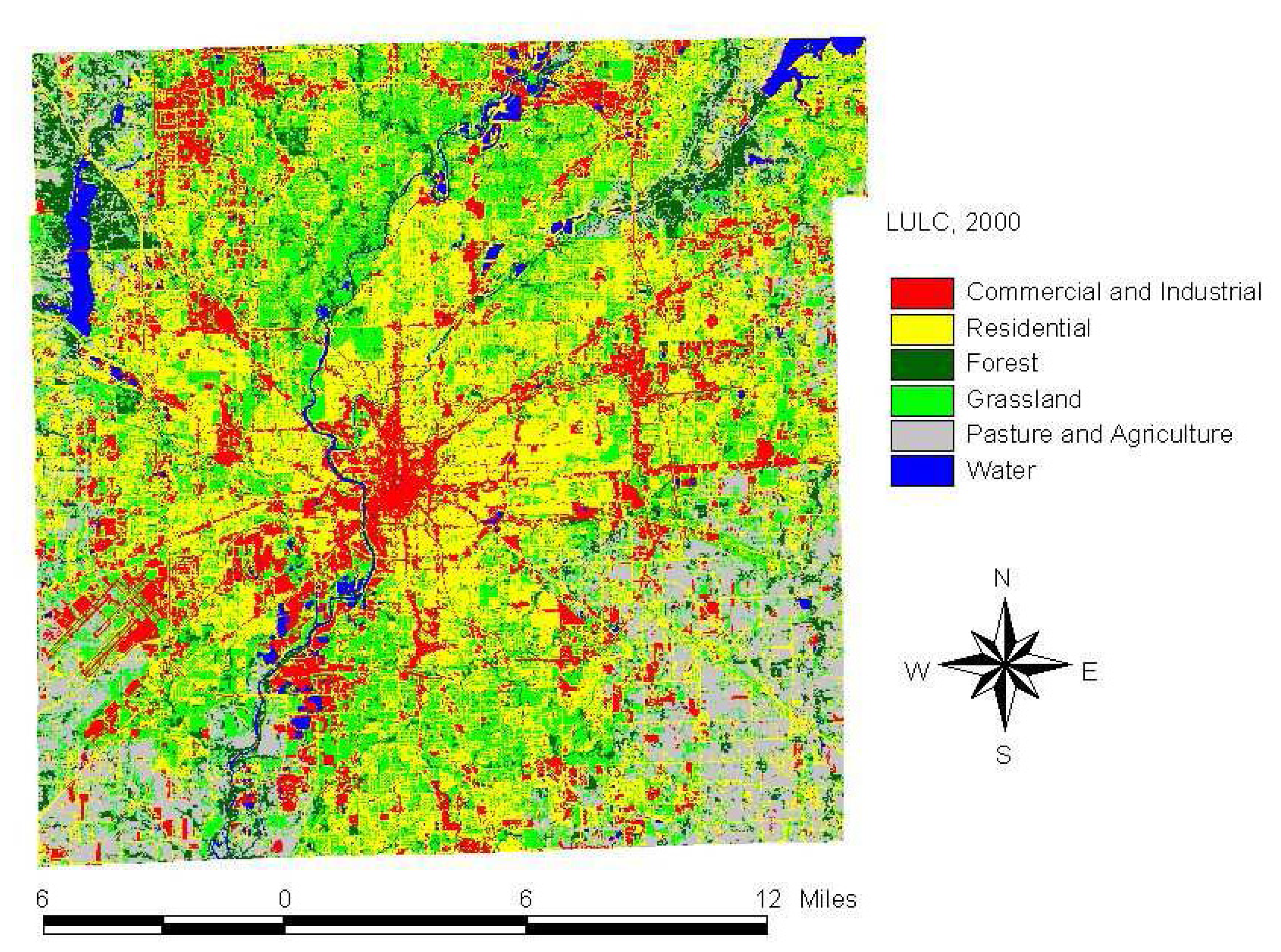
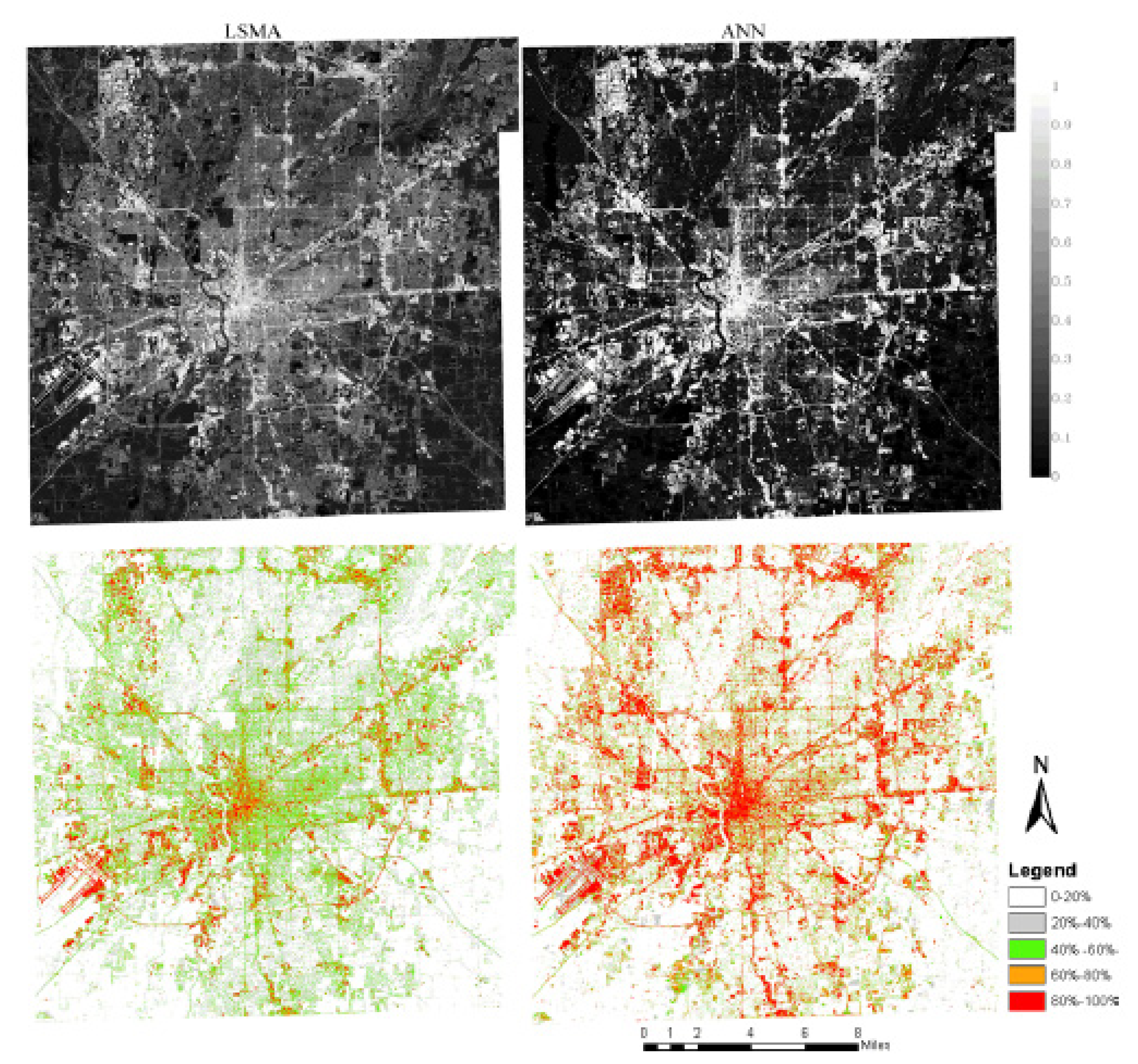
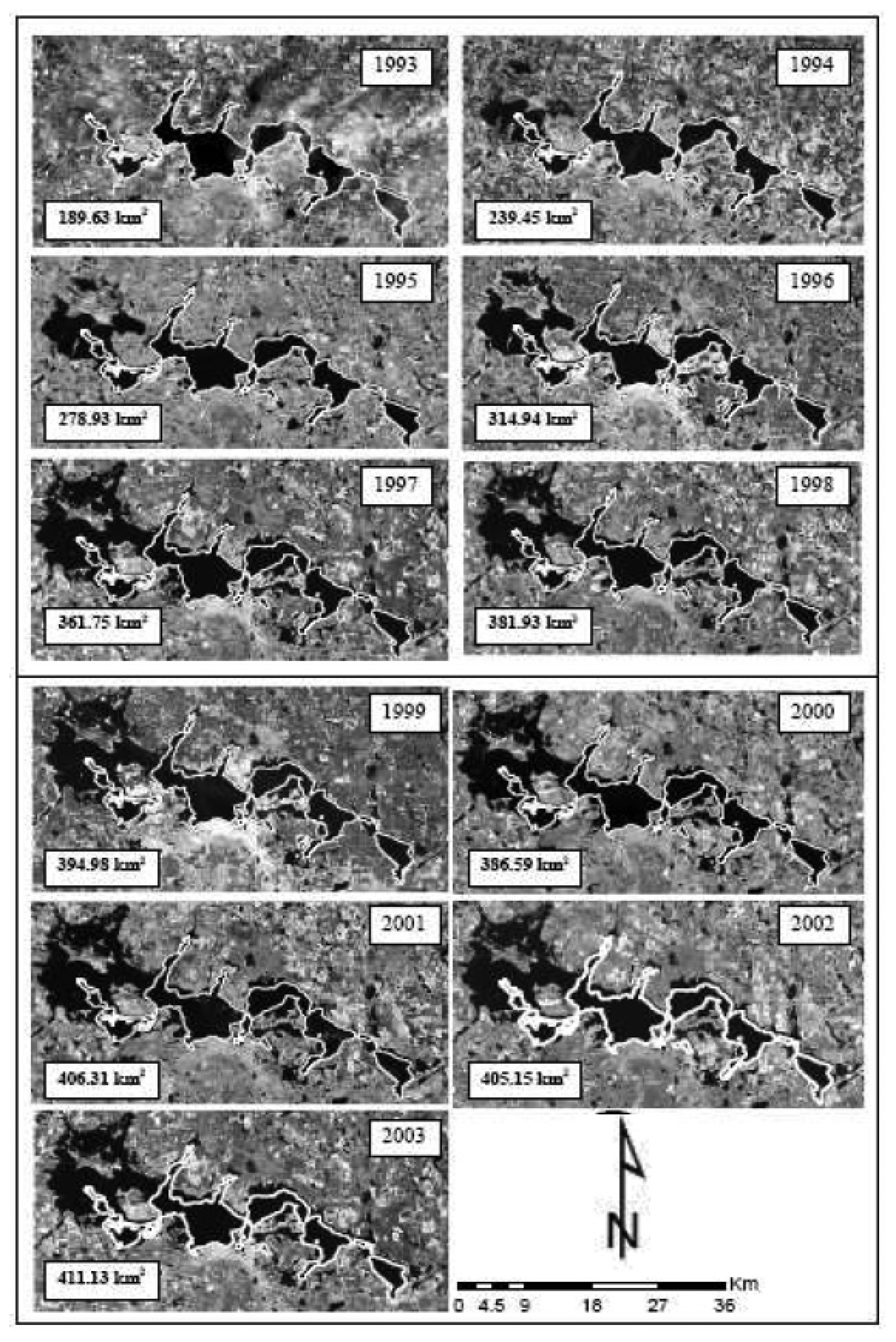

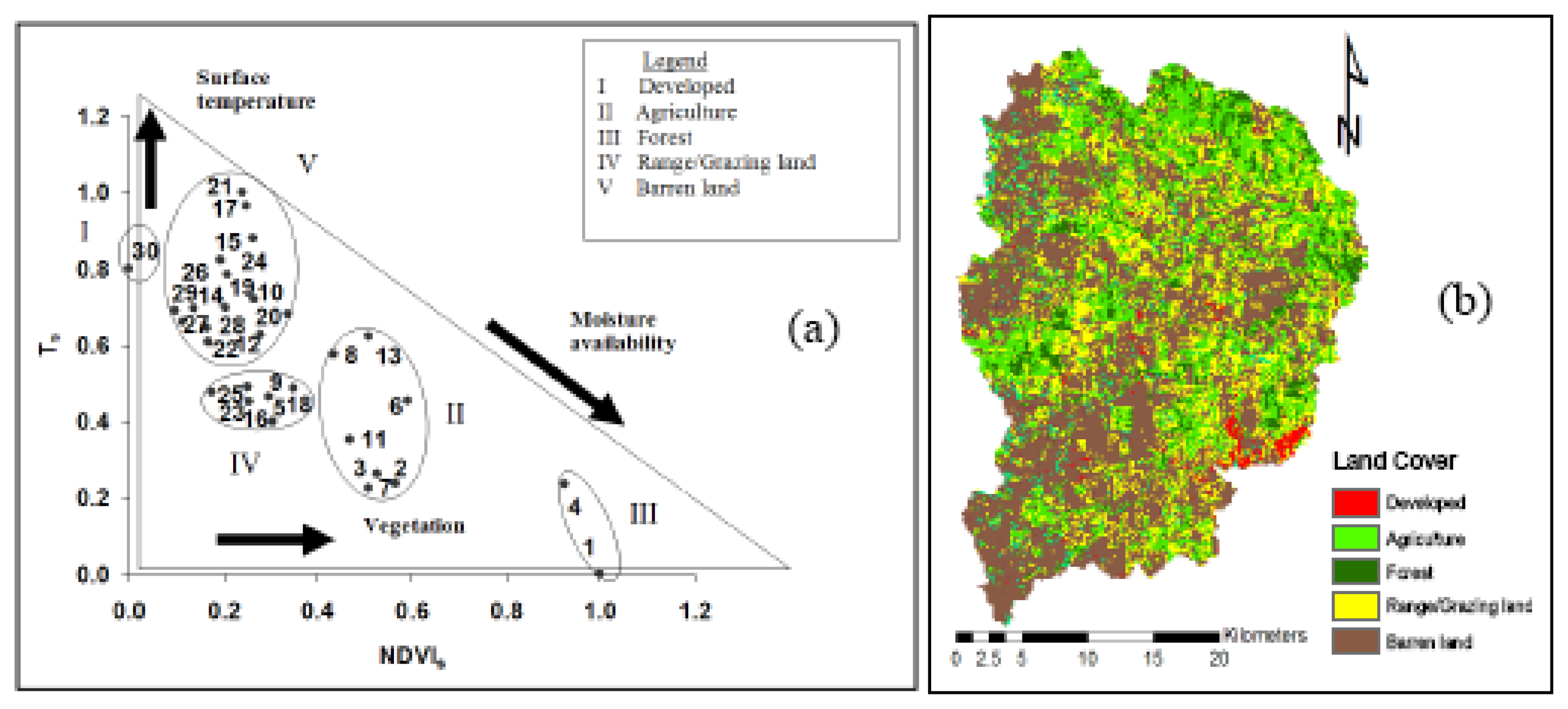
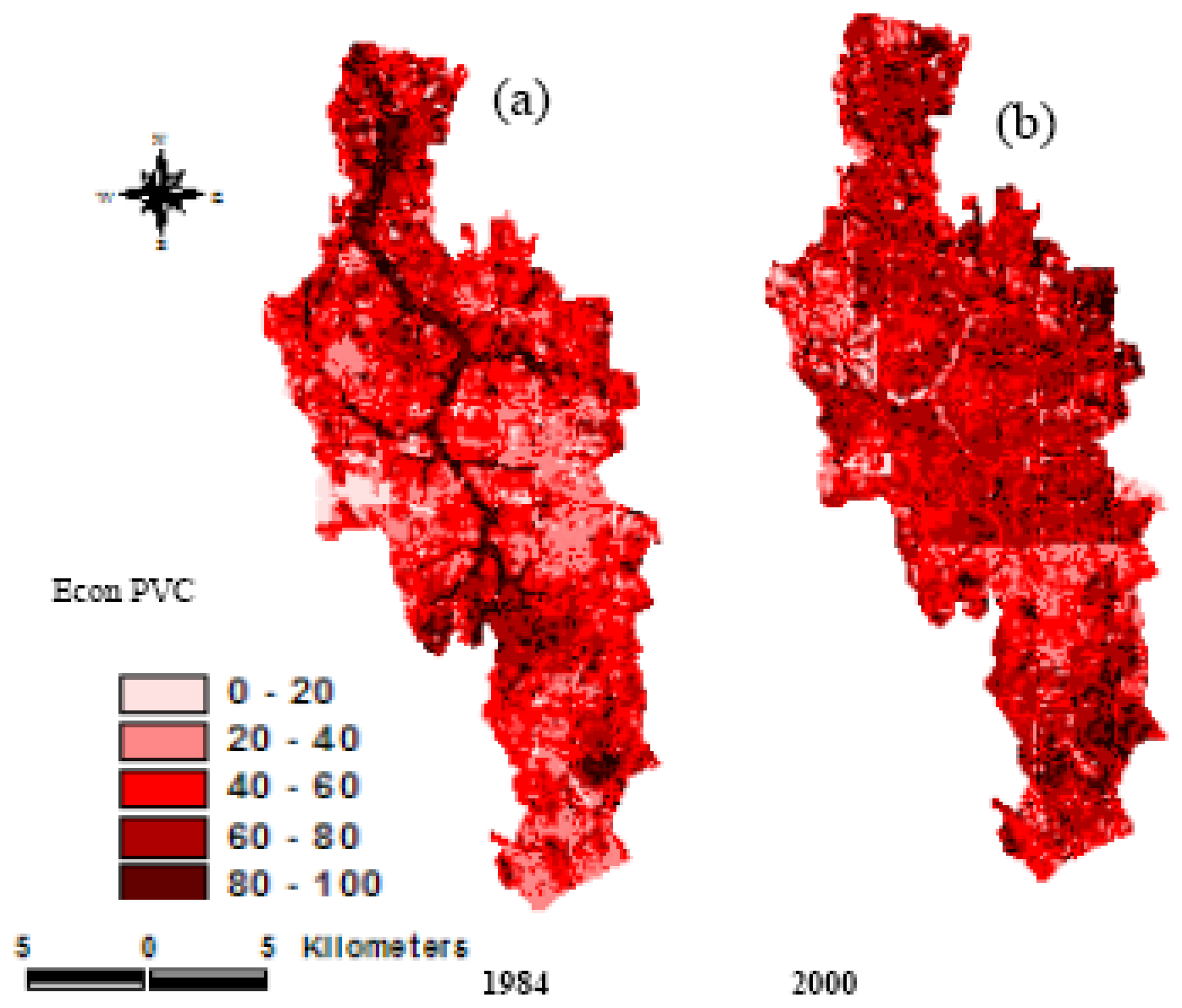
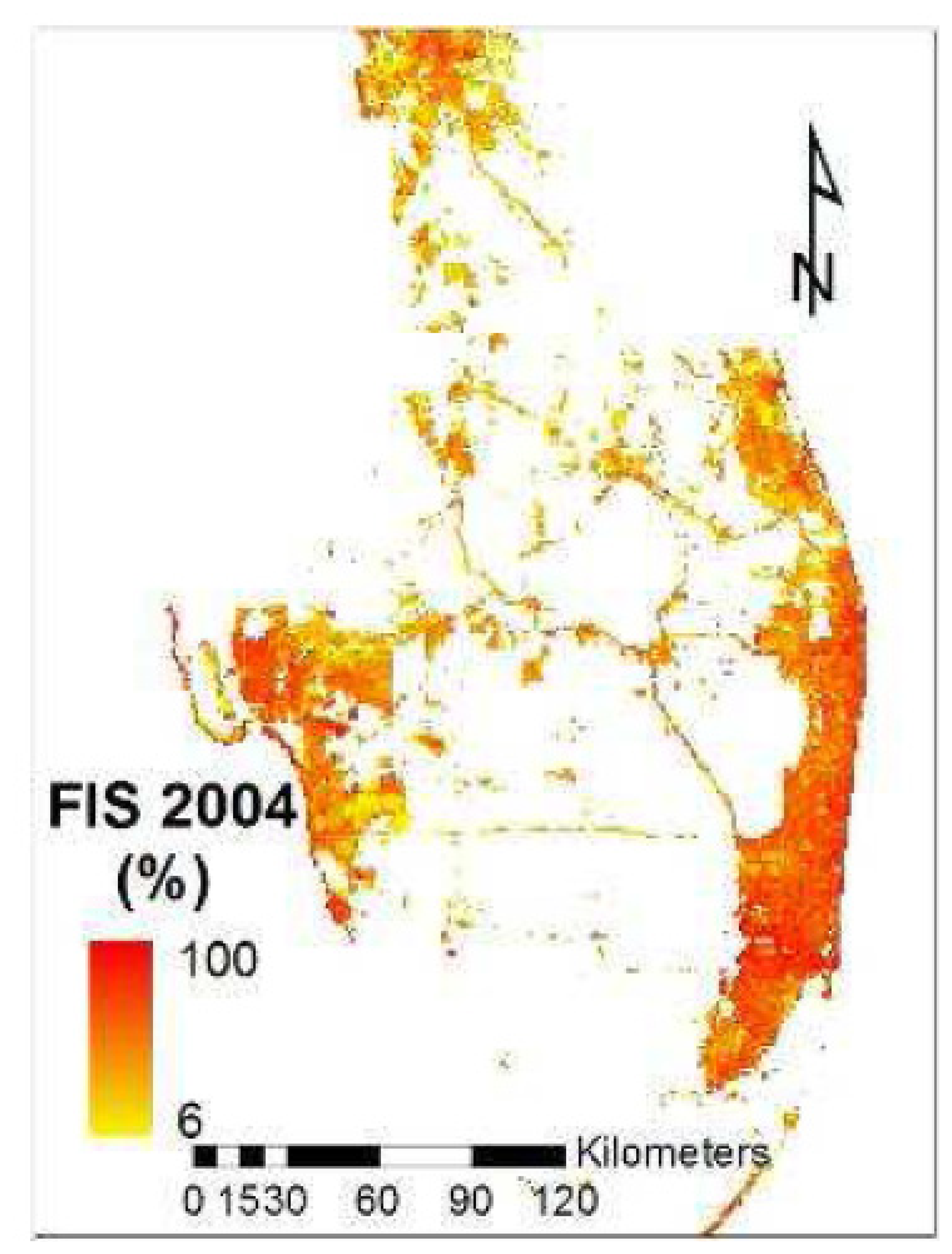

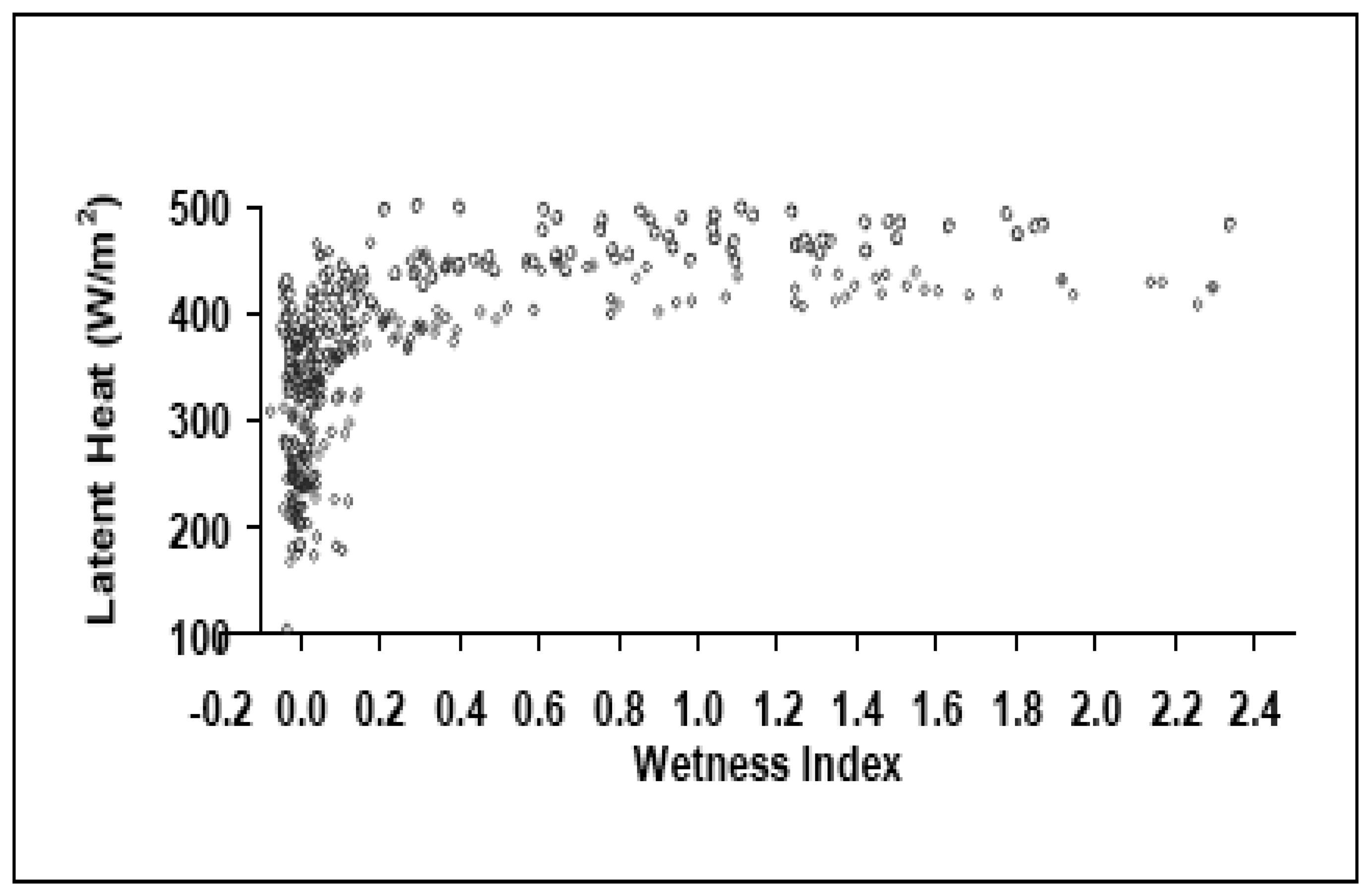

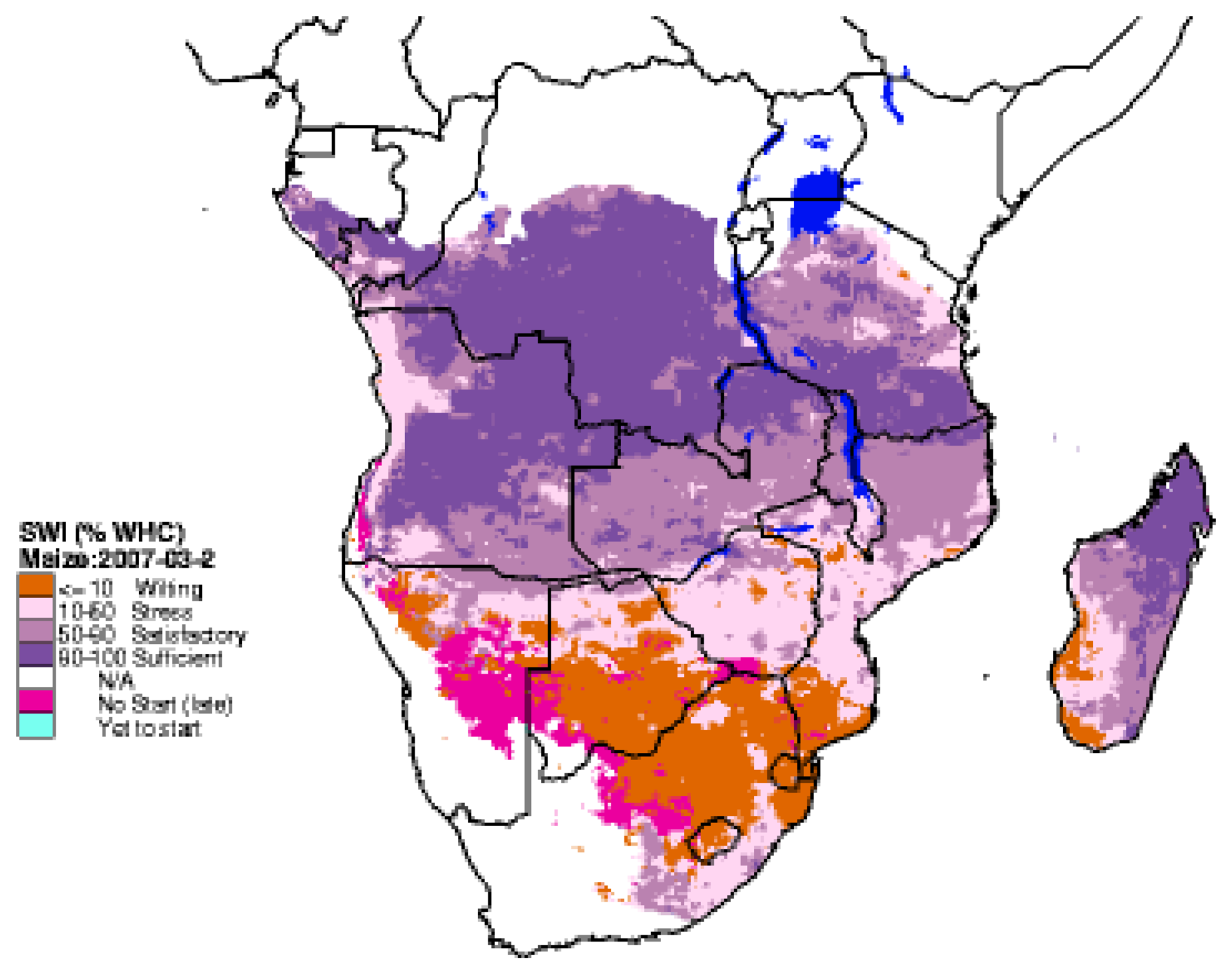
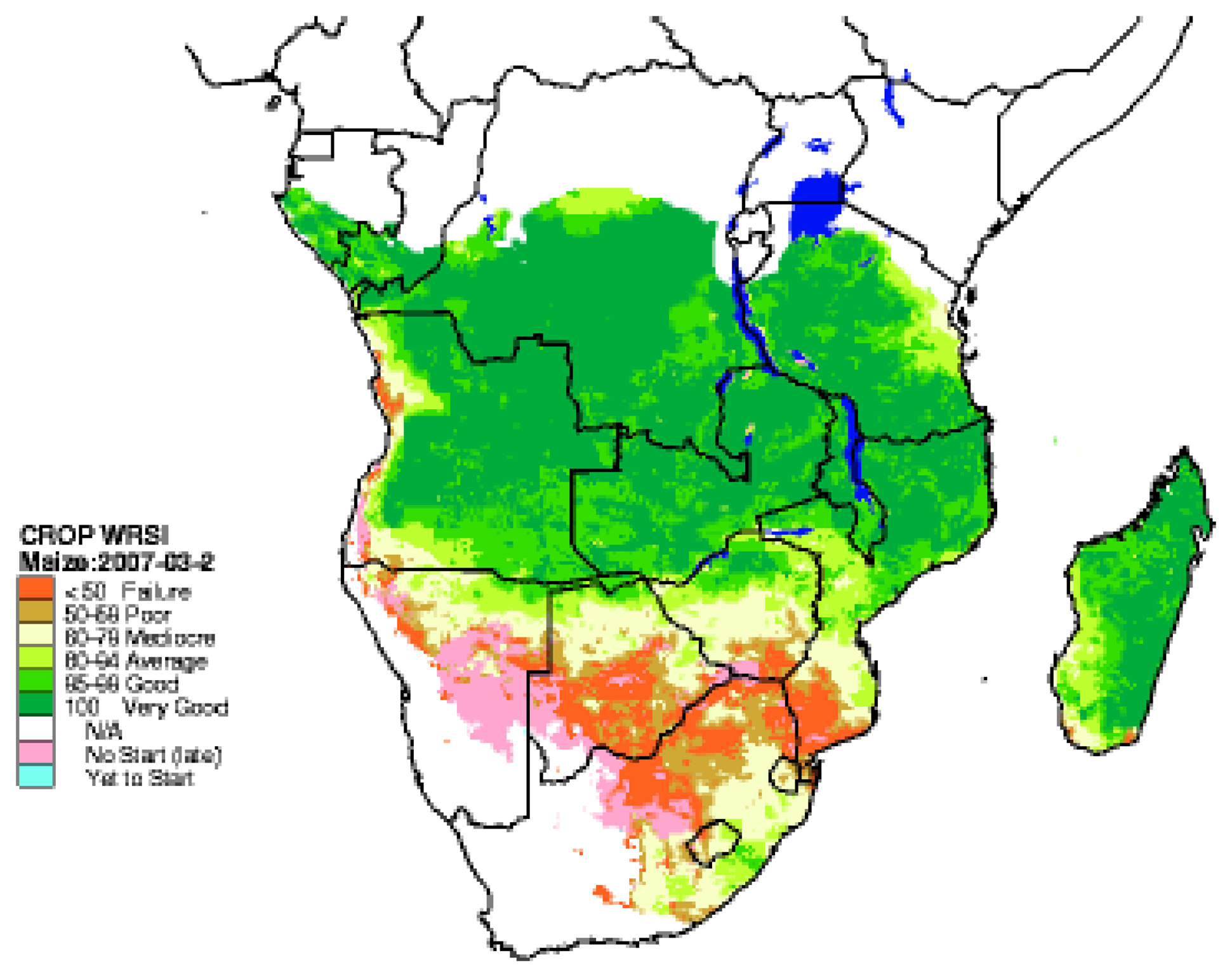
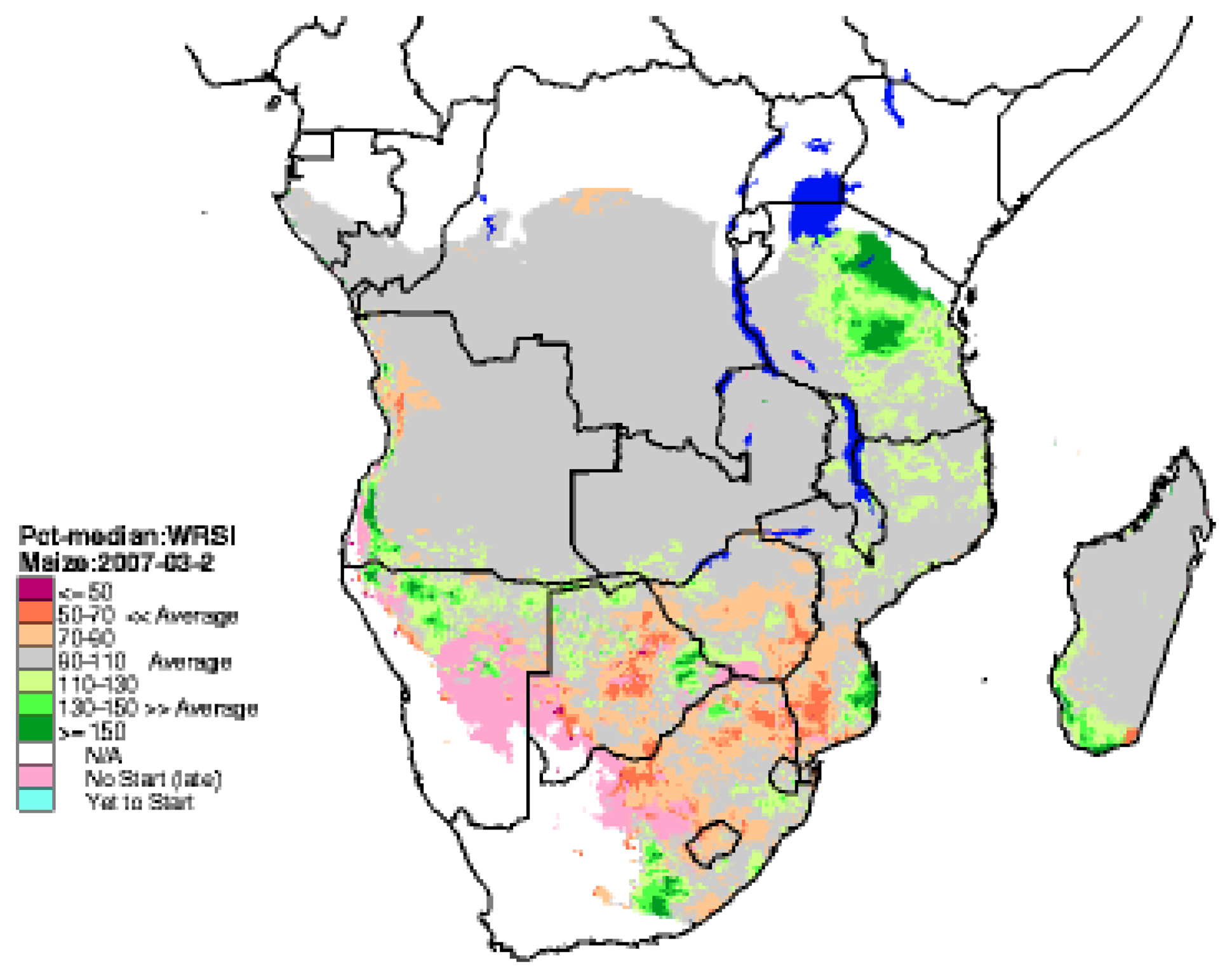
| Sensor | Spatial (meters) | Spectral (#) | Radiometric (bit) | band range (μm) | band widths (μm) | Irradiance (W m2-sr-1 μm-1) | Data Points (# per hectares) | Frequency of revisit (days) | |||||||||||||||
|---|---|---|---|---|---|---|---|---|---|---|---|---|---|---|---|---|---|---|---|---|---|---|---|
| A.Coarse Resolution Sensors | |||||||||||||||||||||||
| 1. AVHRR | 1000 | 4 | 11 | 0.58-0.68 | 0.10 | 1390 | 0.01 | daily | |||||||||||||||
| 0.725-1.1 | 0.375 | 1410 | |||||||||||||||||||||
| 3.55-3.93 | 0.38 | 1510 | |||||||||||||||||||||
| 10.30-10.95 | 0.65 | 0 | |||||||||||||||||||||
| 10.95-11.65 | 0.7 | 0 | |||||||||||||||||||||
| 2. MODIS | 250, 500,1000 | 36/7 | 12 | 0.62-0.67 | 0.05 | 1528.2 | 0.16, 0.04, 0.01 | daily | |||||||||||||||
| 0.84-0.876 | 0.036 | 974.3 | 0.16, 0.04, 0.01 | ||||||||||||||||||||
| 0.459-0.479 | 0.02 | 2053 | |||||||||||||||||||||
| 0.545-0.565 | 0.02 | 1719.8 | |||||||||||||||||||||
| 1.23-1.25 | 0.02 | 447.4 | |||||||||||||||||||||
| 1.63-1.65 | 0.02 | 227.4 | |||||||||||||||||||||
| 2.11-2.16 | 0.05 | 86.7 | |||||||||||||||||||||
| B.Multi Spectral Sensors | |||||||||||||||||||||||
| 3. Landsat-1, 2, 3 | MSS 56X79 | 4 | 6 | 0.5-0.6 | 0.1 | 1970 | 2.26 | 16 | |||||||||||||||
| 0.6-0.7 | 0.1 | 1843 | |||||||||||||||||||||
| 0.7-0.8 | 0.1 | 1555 | |||||||||||||||||||||
| 0.8-1.1 | 0.3 | 1047 | |||||||||||||||||||||
| 4. Landsat-4, 5 TM | 30 | 7 | 8 | 0.45-0.52 | 0.07 | 1970 | 11.1 | 16 | |||||||||||||||
| 0.52-0.60 | 0.80 | 1843 | |||||||||||||||||||||
| 0.63-0.69 | 0.60 | 1555 | |||||||||||||||||||||
| 0.76-0.90 | 0.14 | 1047 | |||||||||||||||||||||
| 1.55-1.74 | 0.19 | 227.1 | |||||||||||||||||||||
| 10.4-12.5 | 2.10 | 0 | |||||||||||||||||||||
| 2.08-2.35 | 0.25 | 80.53 | |||||||||||||||||||||
| 5. Landsat-7 ETM+ | 30 | 8 | 8 | 0.45-0.52 | 0.65 | 1970 | 44.4, 11.1 | 16 | |||||||||||||||
| 0.52-0.60 | 0.80 | 1843 | |||||||||||||||||||||
| 0.63-0.69 | 0.60 | 1555 | |||||||||||||||||||||
| 0.50-0.75 | 0.150 | 1047 | |||||||||||||||||||||
| 0.75-0.90 | 0.200 | 227.1 | |||||||||||||||||||||
| 10.0 - 12.5 | 2.5 | 0 | |||||||||||||||||||||
| 1.75-1.55 | 0.2 | 1368 | |||||||||||||||||||||
| 0.52-0.90 (p) | 0.38 | 1352.71 | |||||||||||||||||||||
| 6. ASTER | 15, 30, 90 | 15 | 8 | 0.52-0.63 | 0.11 | 1846.9 | 44.4, 11.1, 1.23 | 16 | |||||||||||||||
| 0.63-0.69 | 0.06 | 1546.0 | |||||||||||||||||||||
| 0.76-0.86 | 0.1 | 1117.6 | |||||||||||||||||||||
| 0.76-0.86 | 0.1 | 1117.6 | |||||||||||||||||||||
| 1.60-1.70 | 0.1 | 232.5 | |||||||||||||||||||||
| 2.145-2.185 | 0.04 | 80.32 | |||||||||||||||||||||
| 2.185-2.225 | 0.04 | 74.96 | |||||||||||||||||||||
| 2.235-2.285 | 0.05 | 69.20 | |||||||||||||||||||||
| 2.295-2.365 | 0.07 | 59.82 | |||||||||||||||||||||
| 2.360-2.430 | 0.07 | 57.32 | |||||||||||||||||||||
| 12 | 8.125-8.475 | 0.35 | 0 | ||||||||||||||||||||
| 8.475-8.825 | 0.35 | 0 | |||||||||||||||||||||
| 8.925-9.275 | 0.35 | 0 | |||||||||||||||||||||
| 10.25-10.95 | 0.7 | 0 | |||||||||||||||||||||
| 10.95-11.65 | 0.7 | 0 | |||||||||||||||||||||
| 7. ALI | 30 | 10 | 12 | .048-0.69 (p) | 0.64 | 1747.8600 | |||||||||||||||||
| 0.433-0.453 | 0.20 | 1849.5 | 11.1 | 16 | |||||||||||||||||||
| 0.450-0.515 | 0.65 | 1985.0714 | |||||||||||||||||||||
| 0.425-0.605 | 0.80 | 1732.1765 | |||||||||||||||||||||
| 0.633-0.690 | 0.57 | 1485.2308 | |||||||||||||||||||||
| 0.775-0.805 | 0.30 | 1134.2857 | |||||||||||||||||||||
| 0.845-0.890 | 0.45 | 948.36364 | |||||||||||||||||||||
| 1.200-1.300 | 1.00 | 439.61905 | |||||||||||||||||||||
| 1.550-1.750 | 2.00 | 223.39024 | |||||||||||||||||||||
| 2.080-2.350 | 2.70 | 78.072727 | |||||||||||||||||||||
| 8. SPOT-1 | 2. 5-20 | 15 | 16 | 0.50-0.59 | 0.09 | 1858 | 1600, 25 | 3-5 | |||||||||||||||
| -2 | 0.61-0.68 | 0.07 | 1575 | ||||||||||||||||||||
| -3 | 0.79-0.89 | 0.1 | 1047 | ||||||||||||||||||||
| -4 | 1.5-1.75 | 0.25 | 234 | ||||||||||||||||||||
| 0.51-0.73 (p) | 0.22 | 1773 | |||||||||||||||||||||
| 9. IRS-1C | 23.5 | 15 | 8 | 0.52-0.59 | 0.07 | 1851.1 | 18.1 | 16 | |||||||||||||||
| 0.62-0.68 | 0.06 | 1583.8 | |||||||||||||||||||||
| 0.77-0.86 | 0.09 | 1102.5 | |||||||||||||||||||||
| 1.55-1.70 | 0.15 | 240.4 | |||||||||||||||||||||
| 0.5-0.75 (P) | 0.25 | 1627.1 | |||||||||||||||||||||
| 10. IRS-1 | 23.5 | 15 | 8 | 0.52-0.59 | 0.07 | 1852.1 | 18.1 | 16 | |||||||||||||||
| 0.62-0.68 | 0.06 | 1577.38 | |||||||||||||||||||||
| 0.77-0.86 | 0.09 | 1096.7 | |||||||||||||||||||||
| 1.55-1.70 | 0.15 | 240.4 | |||||||||||||||||||||
| 0.5-0.75 (P) | 0.25 | 1603.9 | |||||||||||||||||||||
| 11. IRS-P6-AWiFS | 56 | 4 | 10 | 0.52-0.59 | 0.07 | 1857.7 | 3.19 | 16 | |||||||||||||||
| 0.62-0.68 | 0.06 | 1556.4 | |||||||||||||||||||||
| 0.77-0.86 | 0.09 | 1082.4 | |||||||||||||||||||||
| 1.55-1.70 | 0.15 | 239.84 | |||||||||||||||||||||
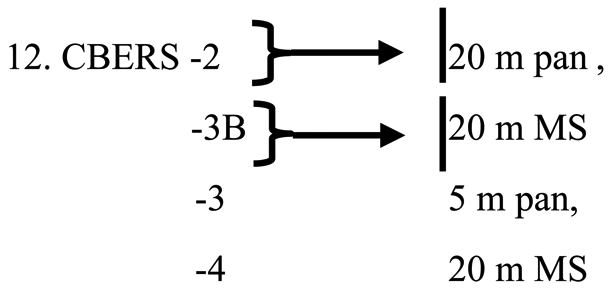 | 20 m pan, | 11 | 0.51-0.73 | 0.22 | 1934.03 | 25, 25 | |||||||||||||||||
| 20 m MS | 0.45-0.52 | 0.07 | 1787.10 | ||||||||||||||||||||
| 5 m pan, | 0.52-0.59 | 0.07 | 1587.97 | 400, 25 | |||||||||||||||||||
| 20 m MS | 0.63-0.69 | 0.06 | 1069.21 | ||||||||||||||||||||
| 0.77-0.89 | 0.12 | 1664.3 | |||||||||||||||||||||
| C.Hyper-Spectral Sensor | |||||||||||||||||||||||
| 1. Hyperion | 30 | 196a | 16 | 196 effective | 10 nm wide | See data in | 11.1 | 16 | |||||||||||||||
| Calibrated bands | (approx.) for all | Neckel and Labs | |||||||||||||||||||||
| VNIR (band 8 to 57 | 196 bands | (1984). Plot it | |||||||||||||||||||||
| 427.55 to 925.85 nm | and obtain | ||||||||||||||||||||||
| SWIR (band 79 to 224) | values for | ||||||||||||||||||||||
| 932.72 to 2395.53 nm | Hyperion bands | ||||||||||||||||||||||
| D.Hyper-Spatial Sensor | |||||||||||||||||||||||
| 1. IKONOS | 1-4 | 4 | 11 | 0.445-0.516 | 0.71 | 1930.9 | 10000, 625 | 5 | |||||||||||||||
| 0.506-0.595 | 0.89 | 1854.8 | |||||||||||||||||||||
| 0.632-0.698 | 0.66 | 1156.5 | |||||||||||||||||||||
| 0.757-0.853 | 0.96 | 1156.9 | |||||||||||||||||||||
| 2. QUICKBIRD | 0.61-2.44 | 4 | 11 | 0.45-0.52 | 0.07 | 1381.79 | 14872, 625 | 5 | |||||||||||||||
| 0.52-0.60 | 0.08 | 1924.59 | |||||||||||||||||||||
| 0.63-0.69 | 0.06 | 1843.08 | |||||||||||||||||||||
| 0.76-0.89 | 0.13 | 1574.77 | |||||||||||||||||||||
| 3. RESOURSESAT | 5.8 | 3 | 10 | 0.52 - 0.59 | 0.07 | 1853.6 | 33.64 | 24 | |||||||||||||||
| 0.62 - 0.68 | 0.06 | 1581.6 | |||||||||||||||||||||
| 0.77 - 0.86 | 0.09 | 1114.3 | |||||||||||||||||||||
| 4. RAPID EYE - A | 6.5 | 5 | 12 | 0.44-0.51 | 0.07 | 1979.33 | 236.7 | 1-2 | |||||||||||||||
| - E | 0.52-0.59 | 0.07 | 1752.33 | ||||||||||||||||||||
| 0.63-0.68 | 0.05 | 1499.18 | |||||||||||||||||||||
| 0.69-0.73 | 0.04 | 1343.67 | |||||||||||||||||||||
| 0.77-0.89 | 0.12 | 1039.88 | |||||||||||||||||||||
| 5. WORLDVIEW | 0.55 | 1 | 11 | 0.45-0.51 | 0.06 | 1996.77 | 40000 | 1.7-5.9 | |||||||||||||||
| 6. FORMOSAT-2 | 2-8 | 5 | 11 | 0.45-0.52 | 0.07 | 1974.93 | 2500, 156.25 | daily | |||||||||||||||
| 0.52-0.60 | 0.08 | 1743.12 | |||||||||||||||||||||
| 0.63-0.69 | 0.06 | 1485.23 | |||||||||||||||||||||
| 0.76-0.90 | 0.14 | 1041.28 | |||||||||||||||||||||
| 0.45-0.90(p) | 0.45 | 1450 | |||||||||||||||||||||
| 7. KOMPSAT-2 | 1-4 | 5 | 10 | 0.5-0.9 | 0.4 | 1379.46 | 10000, 625 | 3-28 | |||||||||||||||
| 0.45-0.52 | 0.07 | 1974.93 | |||||||||||||||||||||
| 0.52-0.6 | 0.08 | 1743.12 | |||||||||||||||||||||
| 0.63-0.59 | 0.04 | 1485.23 | |||||||||||||||||||||
| 0.76-0.90 | 0.14 | 1041.28 | |||||||||||||||||||||
© 2007 by MDPI ( http://www.mdpi.org). Reproduction is permitted for noncommercial purposes.
Share and Cite
Melesse, A.M.; Weng, Q.; Thenkabail, P.S.; Senay, G.B. Remote Sensing Sensors and Applications in Environmental Resources Mapping and Modelling. Sensors 2007, 7, 3209-3241. https://doi.org/10.3390/s7123209
Melesse AM, Weng Q, Thenkabail PS, Senay GB. Remote Sensing Sensors and Applications in Environmental Resources Mapping and Modelling. Sensors. 2007; 7(12):3209-3241. https://doi.org/10.3390/s7123209
Chicago/Turabian StyleMelesse, Assefa M., Qihao Weng, Prasad S. Thenkabail, and Gabriel B. Senay. 2007. "Remote Sensing Sensors and Applications in Environmental Resources Mapping and Modelling" Sensors 7, no. 12: 3209-3241. https://doi.org/10.3390/s7123209





